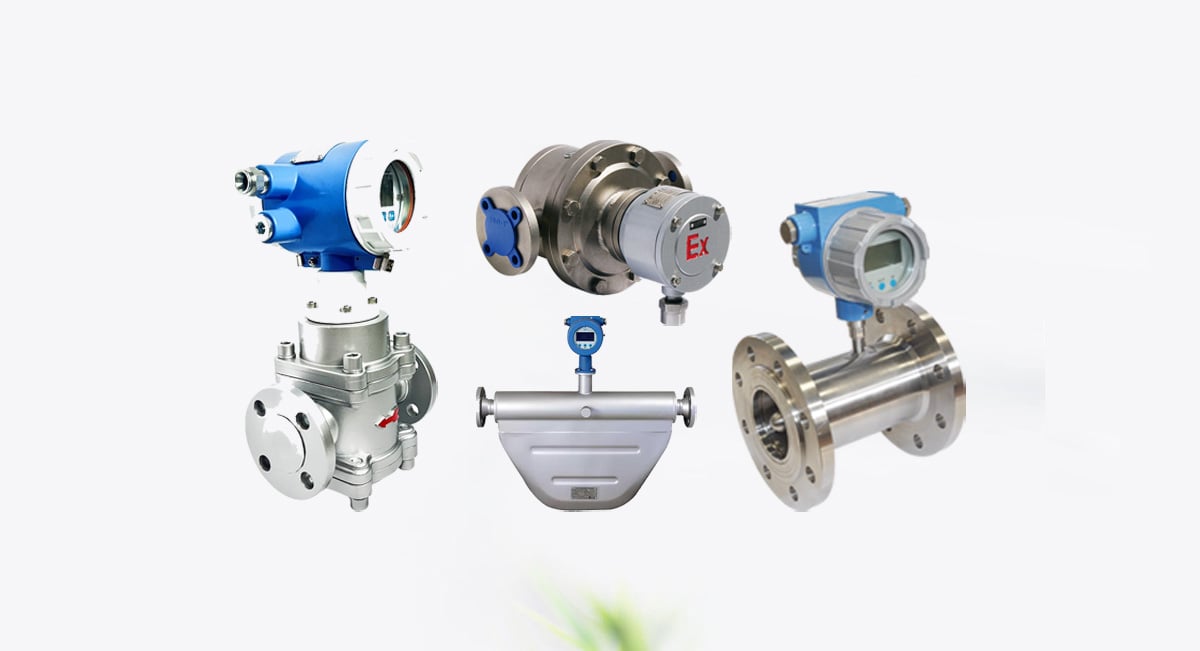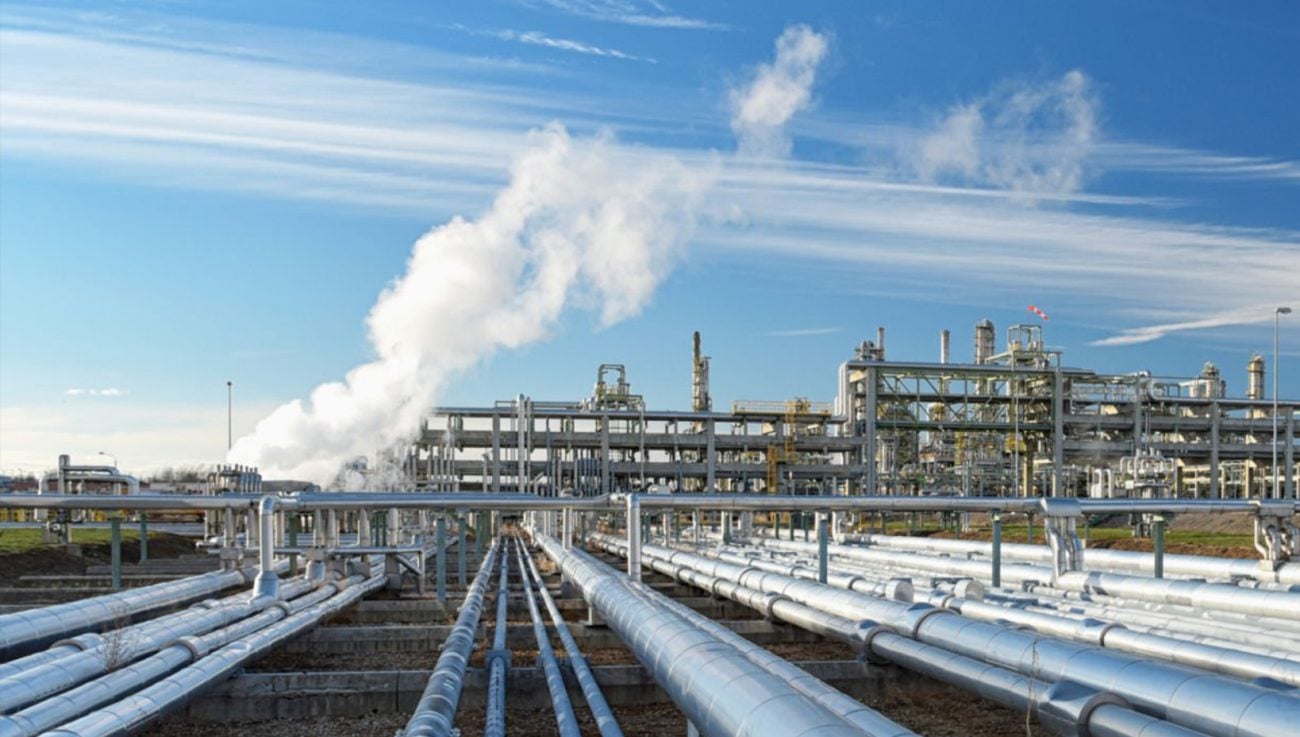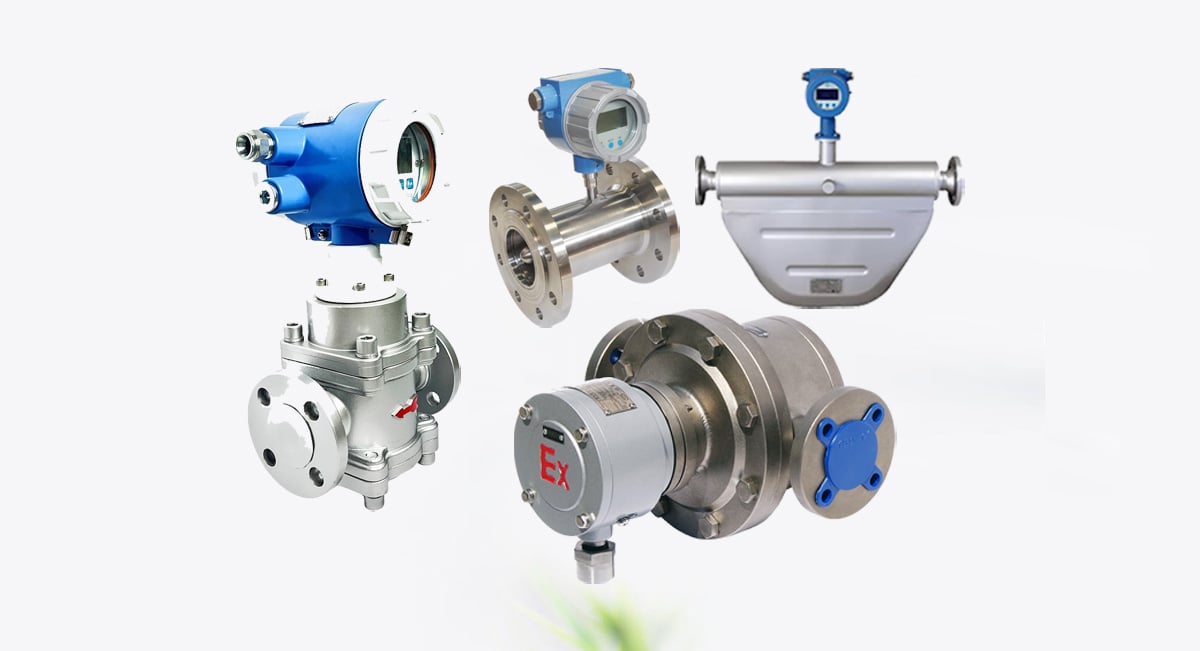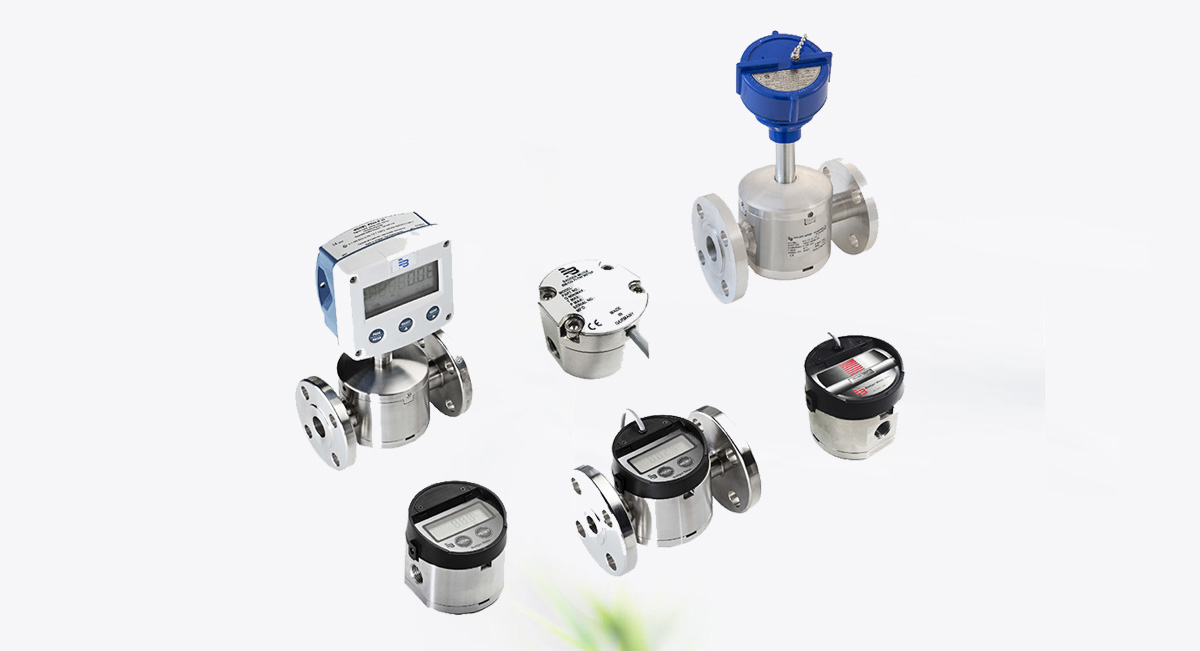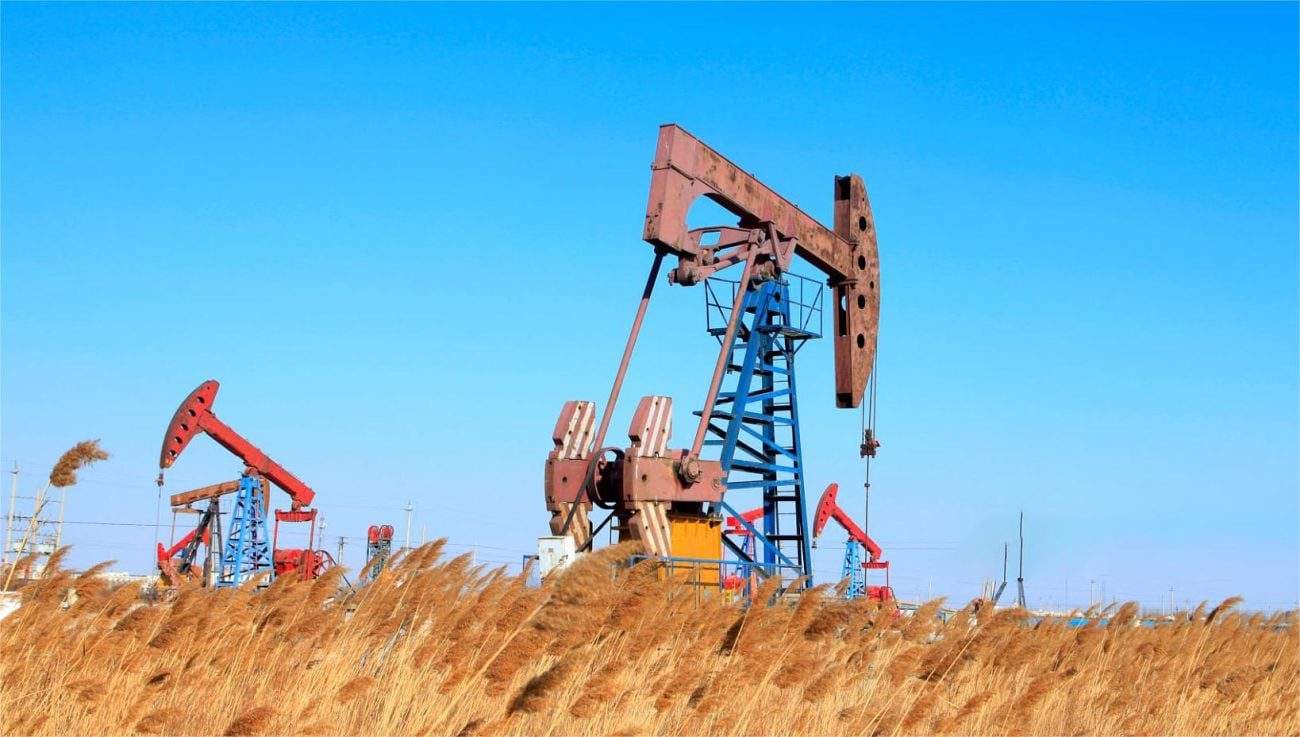Hydraulic oil is one of the most important working fluids in modern industrial equipment. It is responsible not only for power transmission but also for lubrication, cooling, and corrosion protection inside hydraulic systems. Because hydraulic systems operate under high pressure and rely heavily on precise control, the accuracy of hydraulic oil measurement becomes essential. A hydraulic oil flow meter provides real-time monitoring of flow rate, helping operators optimize system performance, troubleshoot issues, and prevent equipment damage.
Table of Contents
What Is Hydraulic Oil?
Hydraulic oil is a specially formulated fluid used in hydraulic systems to transfer power through pressure. Unlike ordinary lubricating oils, gasoline or fuel oils, hydraulic oil must maintain stable viscosity, resist oxidation, and withstand high pressure and temperature variations.
Functions of Hydraulic Oil
Hydraulic oil performs four critical functions within a hydraulic circuit:
- Power transmission It carries energy from hydraulic pumps to cylinders and motors.
- Lubrication It reduces friction between moving parts and prevents wear.
- Cooling It removes heat generated during hydraulic operations.
- Protection It prevents rust, corrosion, and contamination inside the system.
Key Characteristics of Hydraulic Oil
- Medium to high viscosity
- High-pressure endurance
- Excellent thermal stability
- Anti-wear (AW) additives
- Anti-foam and anti-oxidation additives
Because of these characteristics, hydraulic oil behaves differently from fuel oil or engine oil and requires specialized measurement solutions.
Types of Hydraulic Oil and Their Measurement Challenges
Hydraulic oils vary by viscosity, base oil type, and additives. These differences directly affect their flow behavior and influence which meter types are suitable.
1. Mineral-Based Hydraulic Oil (HM, HLP, AW Oils)
Traditional hydraulic systems widely use mineral-base oils with anti-wear additives.
Challenges:
- Medium viscosity
- Sensitive to temperature changes
- Must maintain accuracy at high pressure
2. High Viscosity Hydraulic Oil
Used in excavators, injection molding machines, and heavy industrial presses.
Challenges:
- Thick fluid often causes pressure drop
- Requires flow meters that can handle slow-moving liquids
- Risk of mechanical wear for turbine-based meters
3. Fire-Resistant Hydraulic Fluids (HFC, HFDU, HFDI)
Typically used in steel mills, foundries, and high-temperature environments.
Challenges:
- Different density vs. mineral oils
- Compatibility issues with some flow meter materials
4. Biodegradable Hydraulic Oils
Gaining popularity in environmentally sensitive applications.
Challenges:
- Higher viscosity at low temperatures
- More sensitivity to oxidation
Why Measuring Hydraulic Oil Is Challenging
Hydraulic oil measurement is significantly more difficult than measuring water, diesel, or gasoline. The main challenges include:
1. High Viscosity
Hydraulic oil is thicker and flows more slowly, causing:
- Pressure loss
- Difficulty starting flow in small pipes
- Mechanical stress on flow meter components
Viscosity also changes with temperature, affecting volumetric measurements.
2. High Operating Pressure
Hydraulic systems often run at 10–40 MPa, meaning the flow meter must withstand extremely high pressure without deformation or leakage.
3. Temperature Variations
Hydraulic oil temperature can vary from –20 °C to 90 °C, influencing viscosity, density, and sensor performance.
4. Additives and Chemical Compatibility
Anti-wear, anti-foam, and anti-oxidation additives may react with certain flow meter materials.
5. Clean but Abrasive Environment
Although hydraulic oil is generally clean, small particles from pump wear may:
- Damage mechanical sensors
- Affect turbine meters
- Change flow profile
Because of these factors, not all flow meters are suitable for hydraulic oil.
Recommended Hydraulic Oil Flow Meters
Birotor Positive Displacement Flow meter MT‑ABRM
This birotor pd flow meter is deal for high-viscosity hydraulic oil systems, high-pressure applications, or where very high accuracy and durability are required.
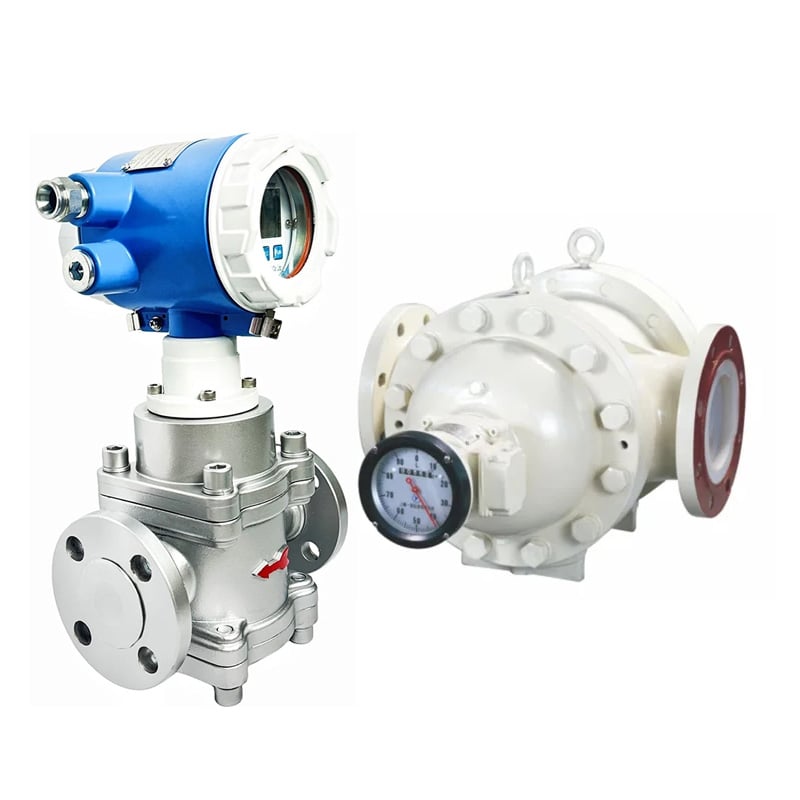
- High accuracy up to ±0.1 %.
- High process pressure capability, up to 110 bar (1595 psi).
- Two helical rotors design with no metal-to-metal sliding parts, ensuring long service life and strong applicability to viscosity changes.
- Suitable for heavy oils and viscous fluids (listed for high-viscosity, heavy fuel oil, etc.)
Oval Gear PD Flow Meter MT‑LC
The oval gear pd flow meter is suitable for hydraulic oil systems with moderate to high viscosity, where you need reliable volumetric measurement and robustness.
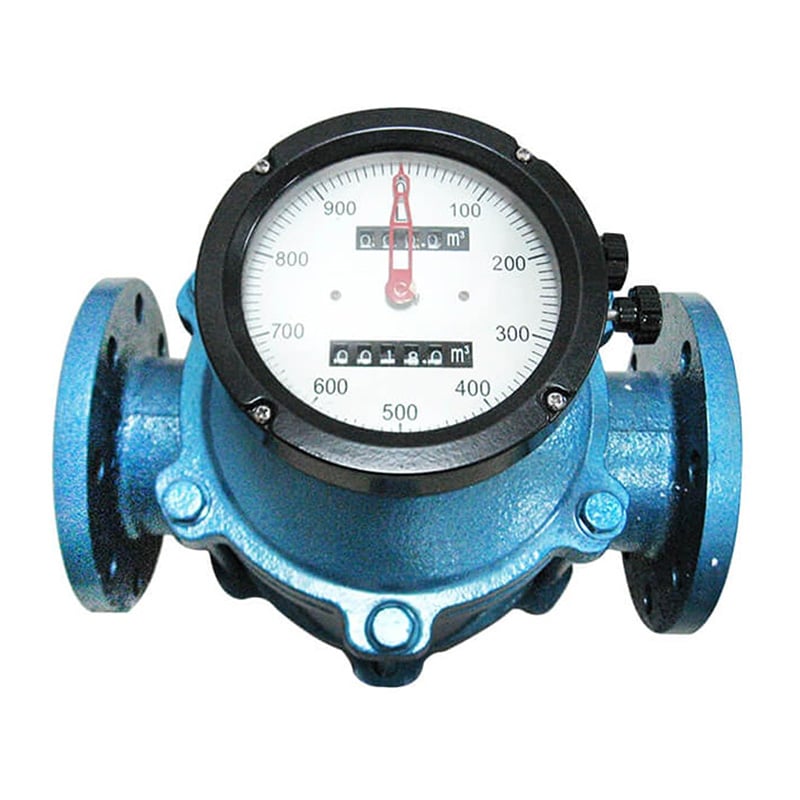
- Accuracy standard ±0.5%, optional ±0.2%.
- Wide measurement range from 0.05–340 m³/h.
- Not sensitive to viscosity change and optimized for higher viscosity liquids.
- Material options for wetted parts (SS, cast iron, cast steel) provide flexibility.
Low Flow Positive Displacement Gear Flow Meter MT‑GF
This gear flow meter is best for hydraulic oil measurement in low-flow circuits (e.g., servo systems, small hydraulic units) or where viscosity is especially high.
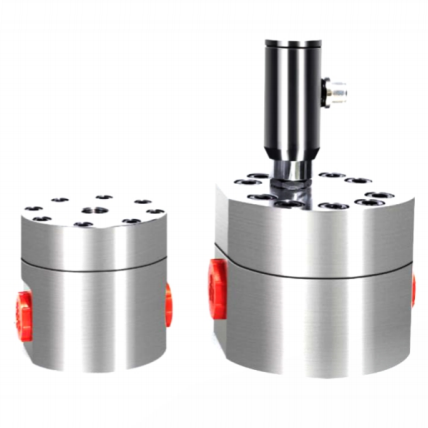
- Specialised for low flow and higher viscosity fluids: measurement range 0.6–2000 L/h.
- Handles high process pressure (standard 100 bar, optional 400 bar).
- Wide turndown ratio (150:1) and designed for viscous and corrosive media (including hydraulic oils).
Air Eliminators / Strainers MT‑LPGX
While not a flow meter per se, this air eliminator and strainer is an important accessory for hydraulic oil measurement systems: especially recommended when air entrainment is a concern or when using PD / gear flow meters and requiring high accuracy and long lifespan.
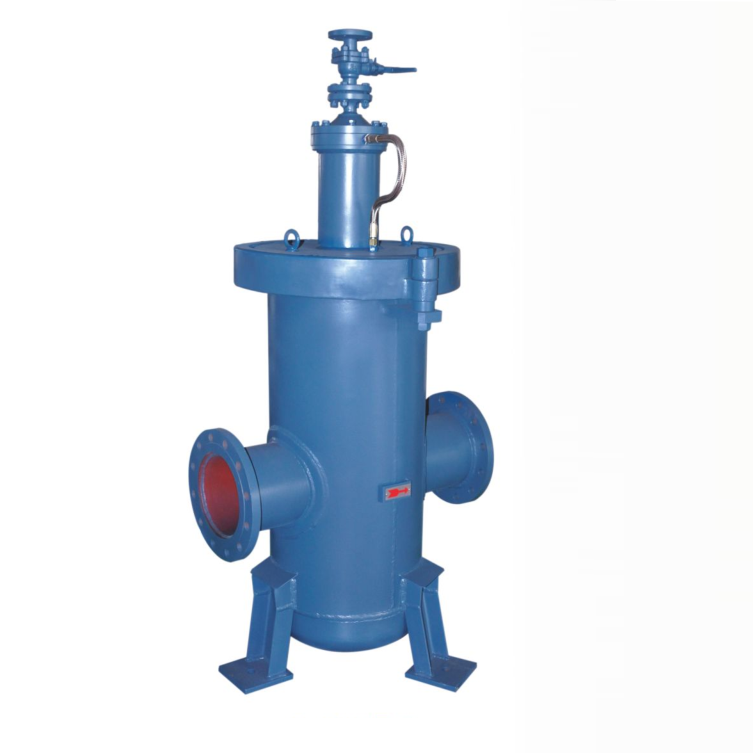
- Designed to remove entrained air or gas upstream of the flow meter, which improves measurement accuracy.
- Nominal diameter range DN 15–800; can handle fluid viscosities up to 3000 mPa·s.
- Prevents inaccuracies caused by air pockets or bubbles, protecting downstream components.
Coriolis Mass Flow Meter W Shape MTD‑ACMW
The Coriolis mass flow meter is ideal for hydraulic oil applications requiring highest available accuracy, mass flow verification, or where multiple fluid types are used and calibration flexibility is critical.
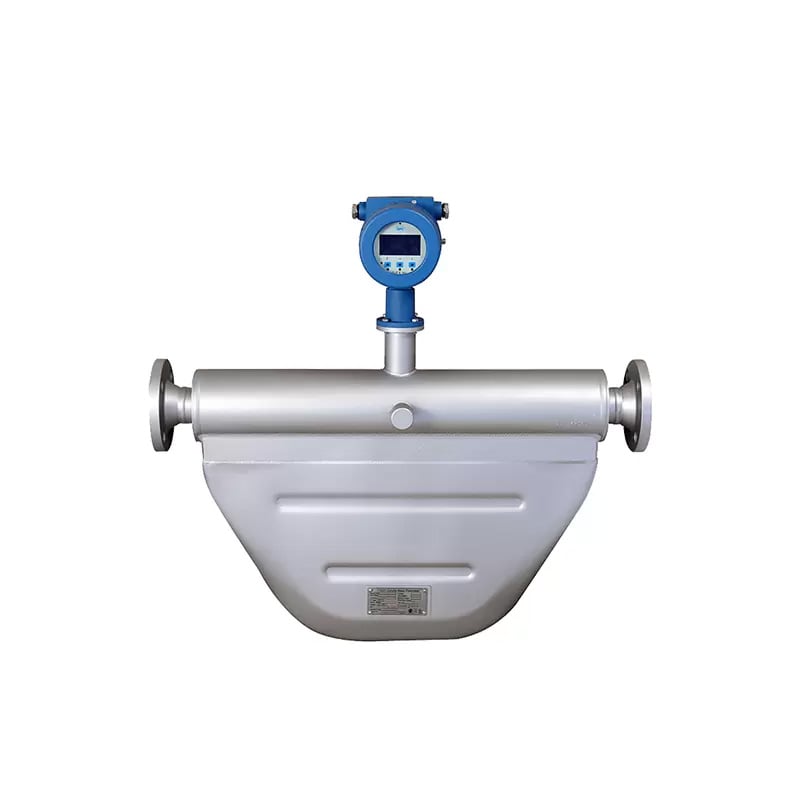
- High accuracy up to ±0.1 %, Good reliability
- Direct mass flow measurement, independent of density changes, viscosity changes, or temperature shifts.
- Excellent accuracy and suitable for high-end applications (laboratory, precision hydraulics).
- Typical feature set: measures mass, density, temperature — ideal for variable fluid properties.
How to Choose the Right Meter for Hydraulic Oil
When selecting a flow meter for hydraulic oil systems, consider the following factors, and use the above options accordingly.
1. Viscosity of the hydraulic oil
- Very high Viscosity → Choose MT-ABRM or MT-GF
- Medium to high Viscosity → MT-LC
- Low to moderate Viscosity → MT-LC or possibly other simpler types
2. Flow rate and turndown ratio
- Low flow circuits → MT-GF
- Standard to high flow circuits → MT-ABRM or MT-LC
- Precision mass measurement regardless of flow variation → MTD-ACMW
3. Accuracy requirement
- Top accuracy (±0.1%) → MT-ABRM or MTD-ACMW
- General industry accuracy (±0.2%-0.5%) → MT-LC or MT-GF
4. System Pressure & Temperature
- High pressure (> 100 bar) → MT-ABRM (supports up to 110 bar or more) or MT-GF (option 400 bar)
- Moderate pressure → MT-LC
- Include accessory for air/gas removal if bubbles entrained → MT-LPGX
5. Fluid/installation conditions
- Entrained air or gas likely present → Include MT-LPGX upstream of primary meter
- Variable fluid density/temperature/viscosity → Consider MTD-ACMW mass flow meter
- Straight-pipe run limitations or installation constraints → PD gear meters (MT-LC/MT-GF) often more forgiving
6. Budget / Lifecycle cost
- More basic PD gear meter (MT-LC) may meet many hydraulic oil applications cost-effectively
- For long-term precision and higher cost justification → MT-ABRM or MTD-ACMW
- Accessory (MT-LPGX) adds cost but can significantly improve measurement reliability
Hydraulic oil is a critical working fluid in industrial systems, and its measurement requires a flow meter that can handle high viscosity, high pressure, and temperature variations. Metlan Instruments product portfolio offers several excellent options:
- Use MT-ABRM for high-viscosity, high-pressure, high-accuracy needs.
- Use MT-LC for reliable gear PD measurement of hydraulic oil under general conditions.
- Use MT-GF for low-flow and/or high-viscosity hydraulic circuits.
- Use MT-LPGX as an accessory to eliminate air/gas prior to measurement devices, improving accuracy.
- Use MTD-ACMW when mass flow measurement is required and fluid properties vary or highest accuracy is demanded.
By selecting the appropriate meter and configuring the upstream accessories properly, your hydraulic oil system can achieve reliable, repeatable measurement, improving system performance, reducing downtime, and enhancing operational control.


